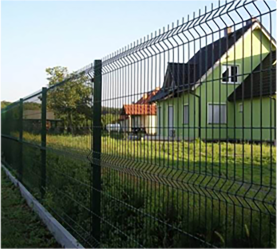Types of Perforated Sheet Metal
Perforated sheet metal is a versatile material widely used across various industries, thanks to its unique combination of strength, lightweight characteristics, and aesthetic appeal. It is made by puncturing holes into metal sheets, creating a pattern that can vary in size, shape, and distribution depending on the desired application. In this article, we will explore the different types of perforated sheet metal, their applications, and their benefits.
Types of Perforated Sheet Metal
1. Standard Perforated Sheets These sheets feature evenly spaced holes that are consistent in size and shape. They are often used for industrial applications, such as filtration, sound control, and architectural uses. Standard perforated sheets can be made from a variety of metals, including stainless steel, aluminum, and carbon steel, making them suitable for different environments.
2. Decorative Perforated Sheets Aesthetic appeal is the primary concern for decorative perforated sheets. These sheets often feature intricate patterns and designs, which can be customized to meet specific design requirements. Decorative perforated metal is commonly used in interior design, architectural screens, or as facades for buildings, adding a distinctive visual element while still allowing light and air to pass through.
3. Heavy-Duty Perforated Sheets Designed for demanding applications, heavy-duty perforated sheets are thicker and reinforced to handle increased stress and weight. They are utilized in situations where significant mechanical strength is crucial, such as in flooring, stair treads, and industrial platforms.
4. Micro Perforated Sheets As the name suggests, micro perforated sheets feature very small holes that are closely spaced. These sheets are extremely effective for applications that require precise filtration, such as in food processing or pharmaceuticals, where only tiny particles need to be separated from liquids or gases.
types of perforated sheet metal

5. Custom Perforated Sheets Many manufacturers offer custom solutions, allowing clients to specify hole shapes, sizes, and configurations based on their unique needs. Custom perforated sheets can be tailored for specific environmental conditions or aesthetic requirements, making them ideal for specialized projects.
Applications of Perforated Sheet Metal
The applications of perforated sheet metal are extensive. In construction and architecture, they are used for building facades, sunshades, and privacy screens. In the automotive industry, they serve as sound dampening materials, while in the HVAC industry, they are used in air distribution systems. Perforated sheets are also indispensable in the manufacturing of filtration systems, where they can effectively separate solids from liquids or gases.
Benefits of Perforated Sheet Metal
One of the primary advantages of perforated sheet metal is its lightweight nature combined with its strength. This makes it easy to transport and install without compromising structural integrity. Additionally, perforated sheets provide excellent ventilation, drainage, and light penetration while maintaining durability and resistance to corrosion.
In conclusion, perforated sheet metal is an essential material that comes in various types tailored to meet diverse industrial and aesthetic needs. From standard and decorative to heavy-duty and micro perforated sheets, the versatility of this material opens up a myriad of possibilities across multiple sectors, ensuring its continued relevance in design and technology.
-
The Best Metal Mesh Solutions: Expanded Aluminum Metal vs. Expanded Stainless Steel Metal
NewsSep.10,2024
-
Round Perforated Sheets vs. Hexagonal Perforated Sheets vs. Embossed Perforated Sheet Metal
NewsSep.10,2024
-
Perforated Metal Sheets
NewsSep.10,2024
-
Experience The Excellence Of Stainless Steel Grating
NewsSep.10,2024
-
Discover the Versatility Of Metal Mesh Expanded Forming Machines
NewsSep.10,2024
-
Discover The Advantages Of Steel Grating For Sale
NewsSep.10,2024
Subscribe now!
Stay up to date with the latest on Fry Steeland industry news.

